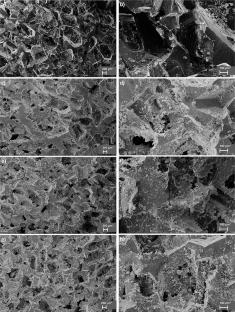Development of a Flexible Porous GNP-PDMS Composite: Tunable Thermal and Electrical Properties for Novel Applications
Abstract
The integration of carbon nanomaterials with flexible polymers has received intensive attention as a promising research direction in developing materials with novel properties for advanced applications. Herein, we report on the fabrication and characterization of flexible porous polydimethylsiloxane (PDMS) coated with graphene nanoplatelets (GNPs). We explore the mechanisms affecting its various properties under deformation, and propose new applications for it. The results show lightweight and excellent flexibility characteristics for the obtained GNP-PDMS composite. Measurements of its electrical resistance revealed a change in the electrical resistivity from 2.35 × 106 Ω·m to 194 Ω·m under a strain change from 10 to 80% illustrating its ability to shift behavior from an electrical insulator to a relatively low resistivity material and demonstrating the considerable potential for use as a flexible electrical switch. Moreover, the thermal conductivity of GNP-PDMS was found to be significantly enhanced (up to ∼ 110%) by changing the level of compression from 20 to 80%, proving a strain-tunable thermal performance, allowing its utilization as an insulation material of variable conductance for unique thermal management applications.



 求助内容:
求助内容: 应助结果提醒方式:
应助结果提醒方式:


